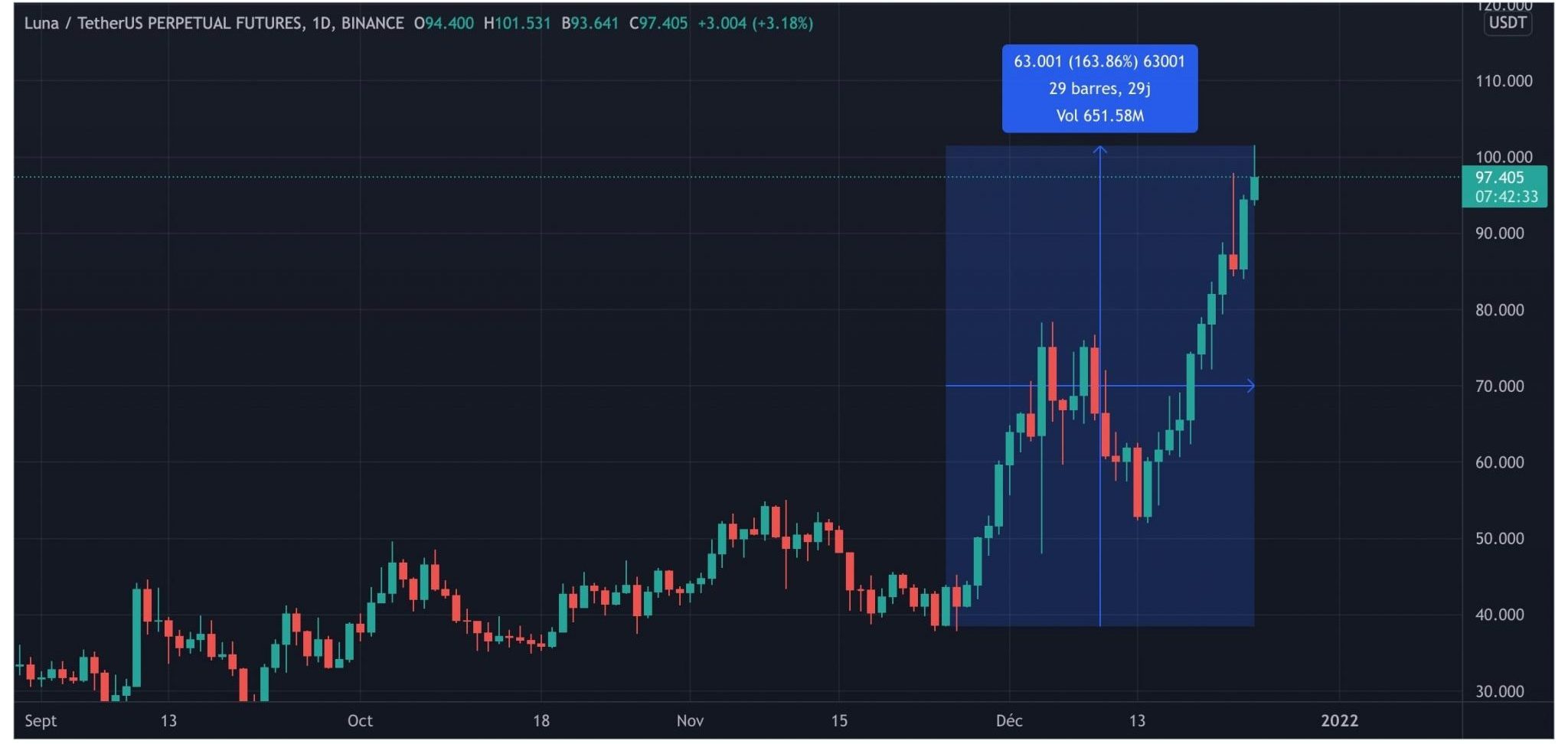Ecosystems that upset the hierarchy
In January 2021, decentralized finance (DeFi) was mainly focused on one and the same blockchain: Ethereum (ETH). Moreover, the ecosystem alone captured nearly 97% of the total value blocked (TVL) on-chain, or about 10.5 billion dollars at the time.
Within a year, the DeFi landscape has completely evolved. New blockchains have imposed themselves on users, at the expense of Ethereum. Faced with its exorbitant fees, users naturally turned to less expensive options, such as Binance Smart Chain (BSC), Avalanche (AVAX), Solana (SOL) or even second layer solutions such as Polygon (MATIC).
In this year 2021, it is probably the BSC that experienced the strongest craze. Still very little used at the start of the year, the ecosystem quickly spread until it reached 20% of the total value blocked on-chain. This represented $ 31 billion locked, against only 140 million on January 1.
Moreover, the protocol PancakeSwap has even surpassed Uniswap at times, its competitor on Ethereum, in terms of daily trading volumes. As for the Binance token, the BNB, it went from $ 43 to over $ 680 in a matter of weeks.
? Don’t Miss – Introduction of BNB Token Auto-Burn Mechanism on Binance Smart Chain
Terra Ecosystem Outperforms Binance Smart Chain
As we expressed above, the DeFi landscape is changing at top speed. This December 20, 2021, the Binance Smart Chain was overtaken by the Terra blockchain (LUNA) in terms of total value blocked on-chain.
According to data from the DeFi Llama analysis tool, the TVL in decentralized finance protocols on Terra recently crossed the $ 21 billion mark, against 17 billion for the BSC. This makes it the largest DeFi ecosystem after Ethereum.
Ranking of DeFi ecosystems by total blocked value (TVL) – Source: DeFi Llama
The explosion of the ecosystem has brought with it the emergence of certain protocols. Almost 43% (more than $ 9 billion) of the total value is stuck on Anchor, a yield-generating application based on stablecoins. In addition, TVL on TerraSwap, a decentralized exchange based on Terra, jumped 81% compared to last week, up to over $ 2 billion.
That said, the Terra ecosystem is still young. Unlike the BSC and its 213 decentralized applications, Terra only supports 13 protocols at the time of this writing. So that’s more than $ 1.6 billion per protocol on average, compared to $ 73 million on the BSC.
? To deepen – The UST of Terra (LUNA) overtakes the DAI to become the 4th capitalization of stablecoins
LUNA prints new $ 101 ATH
As a Christmas present for its users, the LUNA, a native token of the Terra network, exceeded $ 100 this Friday, December 24. In a rally started at the end of November, the LUNA printed a first all-time high (ATH) around $ 78, before blowing slightly.
After a rebound to $ 52, investors took advantage of the announcement listing of Terra’s UST stablecoin on Binance to push LUNA to that new $ 100 ATH. A psychological resistance which seems to have slowed down the progress of the token, which is declining by a few dollars at the time of this writing.

Evolution of the LUNA price – Source: TradingView
This represents an increase more than 163% of its price within a month. This is not the only witness to the good health of the ecosystem, as Terra’s UST recently passed the DAI to become the 4th capitalization of stablecoins, to the tune of $ 9 billion. So many reasons that explain the meteoric increase in TVL on Terra protocols.
? To go further, find all the news about decentralized finance (DeFi)
Newsletter ?
Receive a recap of crypto news every Sunday ? And that’s it.

